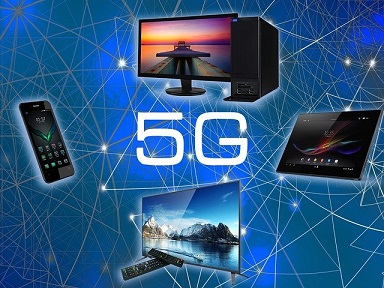What is 5G?
5G, in telecommunications, is the fifth generation networks technology. It is a new global wireless network technology with new additional features after 1G, 2G, 3G, and 4G. 5G networks service area is divided into small geographical areas which are called cells. All 5G devices in a cell are connected to the Internet by radio waves and provides high speed internet.
The main advantage of 5G networks is that it has greater bandwidth giving higher download speeds. In addition to this, 5G wireless technology meant to provide low latency, more reliability, massive network capacity, increased availability to more users. Higher performance and improved efficiency of 5G networks empower new user experiences and connects new industries.
Differences between the previous generations of mobile networks and 5G
To understand 5G networks, it will be good to understand previous generation networks first, these are; 1G, 2G, 3G, and 4G.
1G: The first generation of mobile networks technology in early 1980s that delivered voice.
2G: The advent of 2G (Second Generation) in early 1990s introduced a short-messaging layer. It introduced digital voice e.g. CDMA(Code Division Multiple Access).
3G: The move to 3G (Third Generation) in early 2000s provided the essential network speeds for smartphones and brought mobile data.
4G: In early 2010s, with its blazing data-transfer speed, 4G LTE gave rise to many of the internet devices and services that we enjoy today.
5G: Fifth Generation
These all 1G, 2G, 3G, and 4G led to 5G which is designed to provide more connectivity with comparatively more higher speed than was ever available before.
5G is a unified more capable air interface designed with an extended capacity to enable next-generation user experiences and empower new deployment models.
Benefits of 5G Networks
5G is designed to do a variety of things that can transform human lives. 5G will expand the mobile ecosystem into new realm with faster download speeds, negligible latency and more capacity and connectivity for billions of devices especially in the areas of virtual reality (VR) and artificial intelligence (AI). It will transform every industry, making safer and speedy transportation, remote healthcare facility, precision agriculture, digitized logistics etc.
5G Testing in India
On 04 May 2021, Department of Telecommunications (DoT), Government of India given its approval to Telecom Service Providers (TSPs) namely Bharti Airtel Ltd., Reliance JioInfocomm Ltd., Vodafone Idea Ltd. and MTNL for conducting trials for use and applications of 5G technology.
These Telecom Service Providers have tied up with Ericsson, Nokia, Samsung, and C-DOT, the original equipment manufacturers and technology providers for 5G. Reliance JioInfocomm Ltd. will also conduct 5G trials using indigenous technology owned by it. Use of indigenous technology is encouraged in 5G trails.
These permissions were given by Department of Telecommunications (DoT) as per the priorities and technology partners identified by TSPs themselves. The experimental spectrum was given in various bands. These are mid-band (3.2 GHz to 3.67 GHz), millimeter wave band (24.25 GHz to 28.5 GHz) and in Sub-Gigahertz band (700 GHz). TSPs were also permitted to use their existing spectrum owned by them for conduct of 5G trials.
Duration of 5G Trails in India
The duration of 5G trials India is for a period of 6 months including a time period of 2 months for procurement and setting up of the equipment.
5G testing area in India
The permission given by the DoT specifies that TSPs will conduct trials in rural and semi-urban settings also in addition to urban settings. Conducting trails in rural, semi-urban and urban settings will multiply the benefits of 5G Technology across the country.
Objective of 5G testing in India
The objectives of conducting 5G trials in India include:
- Testing 5G spectrum propagation characteristics
- Model tuning and evaluation of chosen equipment andvendors
- Testing of indigenous technology
- Testing of applications (such as tele-medicine, tele-education, augmented/ virtual reality, drone-based agricultural monitoring, etc.)
- Testing 5G phones and devices
Is 5G testing harming humans
First Country to adopt 5G
On 3 April, 2019 South Korea launched 5G services and became the first country to adopt 5G. On the same day after few hours Verizon launched its 5G services in the United States. It disputed South Korea’s claim of becoming the world’s first country to adopt 5G network because South Korea’s 5G service was launched initially for just six South Korean celebrities. On the launched of 5G services in South Korea, three South Korean telecommunication companies (SK Telecom, KT, and LG Uplus) added more than 40,000 users to their 5G network.
Also Read:

